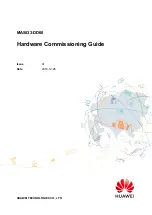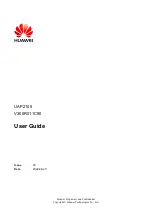
Installation Prerequisites and Considerations
Access Point Deployment Guide
18
NOTICE: The contents of this document are proprietary and confidential and the property of Trilliant Holdings, Inc.,
its subsidiaries, affiliates, and/or licensors. This document is provided subject to the confidentiality obligations set
forth in the agreement between your company and Trilliant. The contents may not be used or disclosed without the
express written consent of Trilliant.
The table below shows the attenuation for common types of antenna lines.
Table 3.
Attenuation at 2.4 GHz for Common Types of Antenna Cables
Model
Size
dB/25 ft
dB/50 ft
dB/100 ft
dB/150 ft
dB/200 ft
LMR-400
.40 inch
1.7
3.4
6.8
10.2
13.6
FSJ4-50B
½ inch
1.5
3.1
6.1
9.2
12.2
LDF4-50A
½ inch
.9
1.9
3.7
5.6
7.4
AVA5-50
⅞ inch
.5
1.0
1.9
2.9
3.8
AVA7-50
1⅝ inch
.3
.6
1.2
1.8
2.4
GPS Antenna
The GPS antenna provides timing signals to the AP. It should be mounted so that it has a clear
view of the sky. A mounting location should be chosen that minimizes shadowing from trees or
structures.
Note:
The GPS antenna should be mounted at least one meter away from the AP antenna to
minimize the chance of interference.
In normal operation, the AP requires GPS synchronization for precision timing of all nodes on
the network. To provide a reliable GPS signal, the AP has a built-in GPS receiver which requires
an externally connected GPS antenna. The GPS antenna cable is connected to a type-N female
connector on the AP.
Many different GPS antennas are available but we recommend using the PCTEL GPS antenna
model GPSL1-TMG-SPI-40NCB for the following reasons:
1.
The PCTEL GPS antenna has a low noise, high gain amplifier which is well-suited to
address cable attenuation when the GPS antenna mounting location requires a long length
of cable. Up to a 20-dB cable loss is acceptable when using this high gain antenna.
2.
The PCTEL GPS antenna provides integrated, onboard, lightning protection that
minimizes the need for a downstream, inline surge suppressor. The GPS antenna must be
properly grounded.
See Figure 5. If using an external surge suppressor, it must be a “DC pass-through” type.
















































